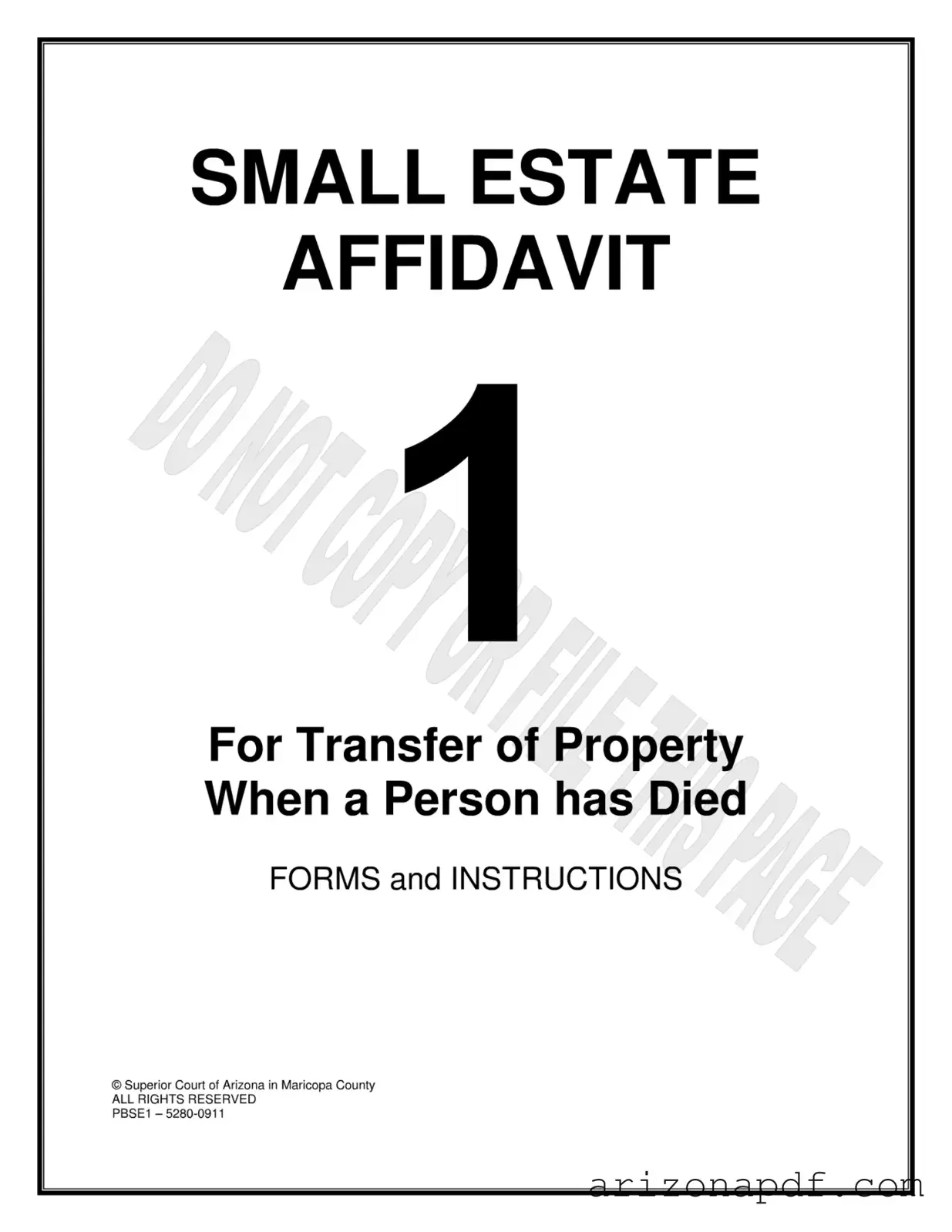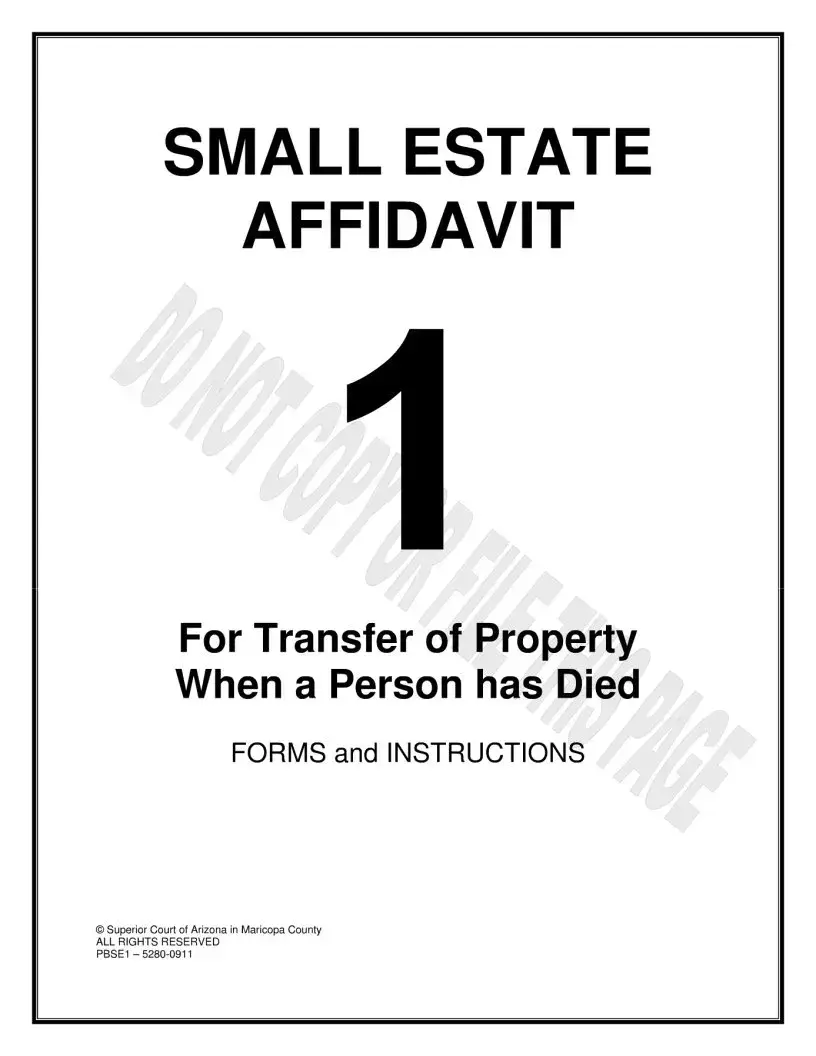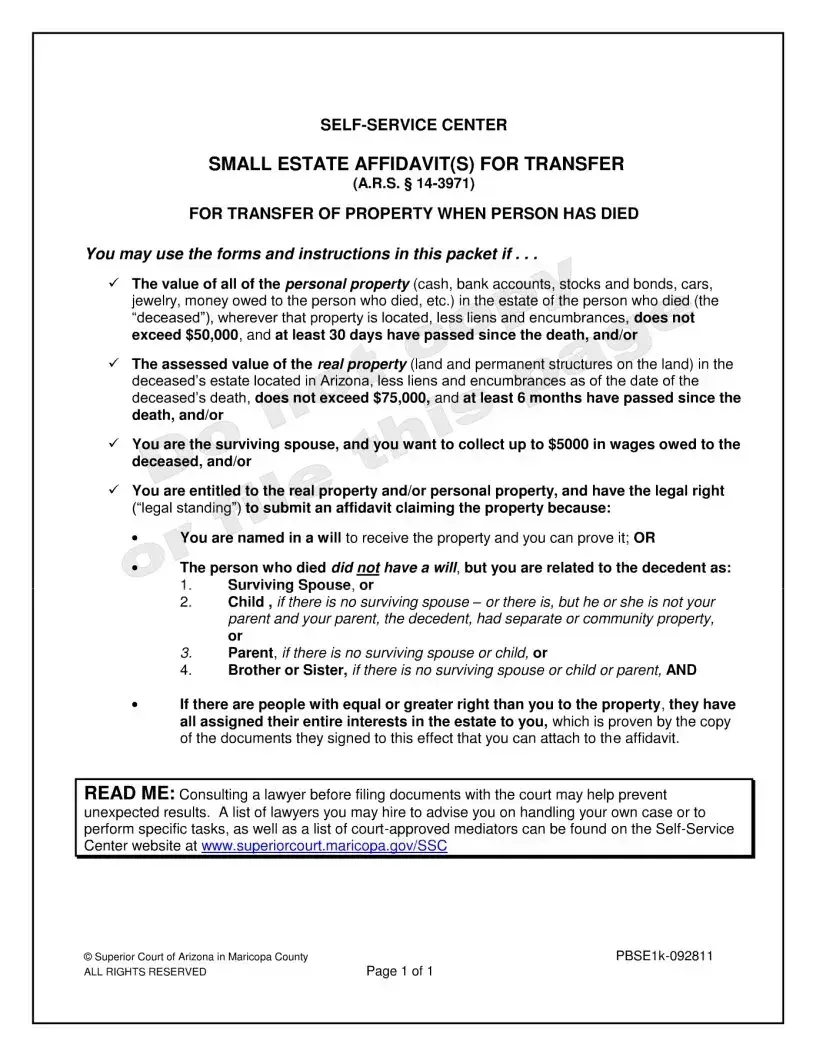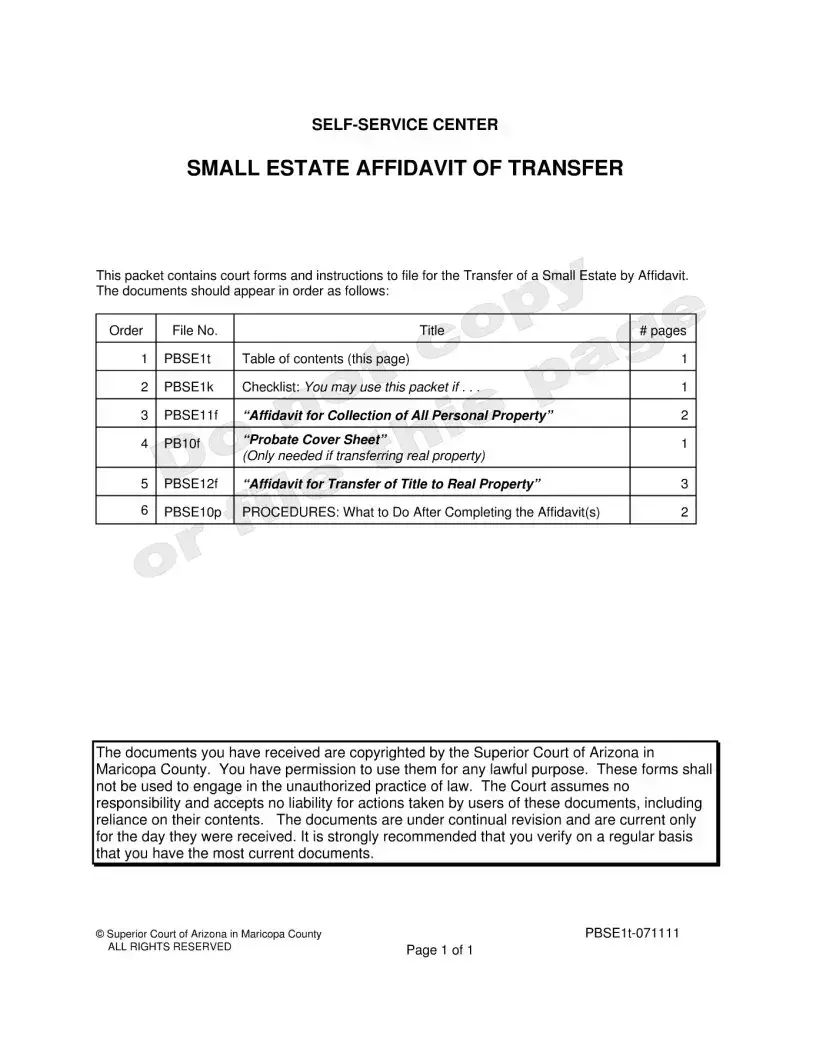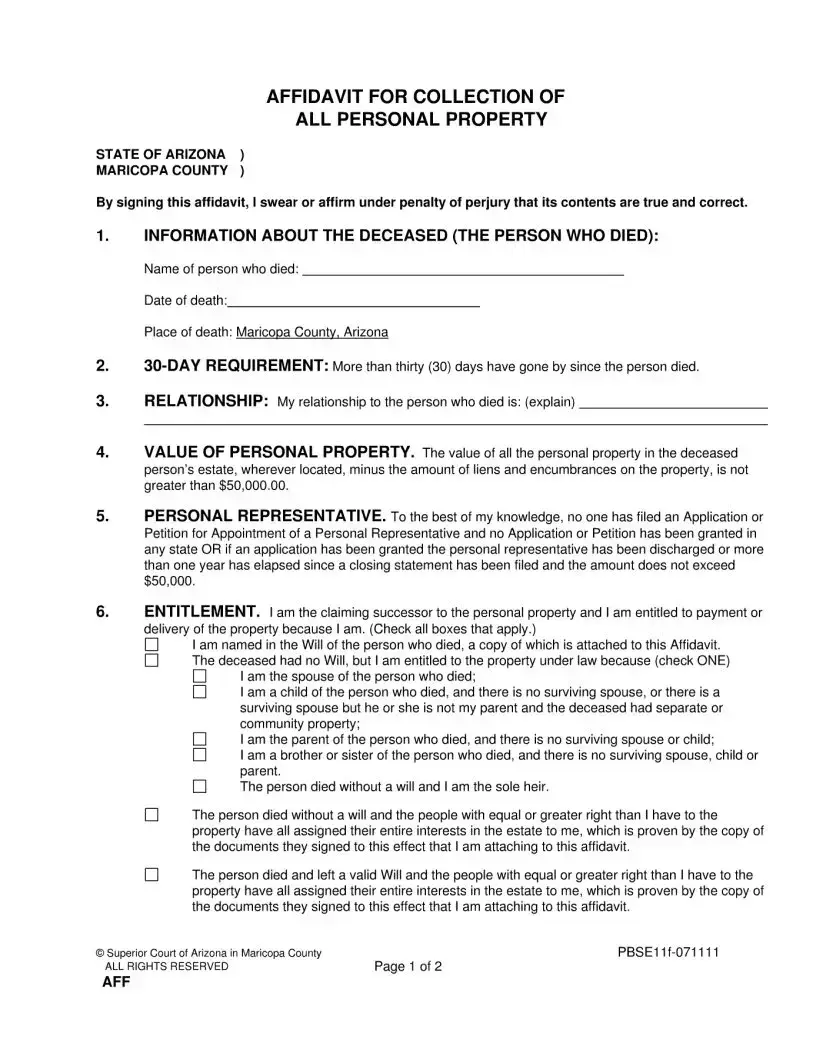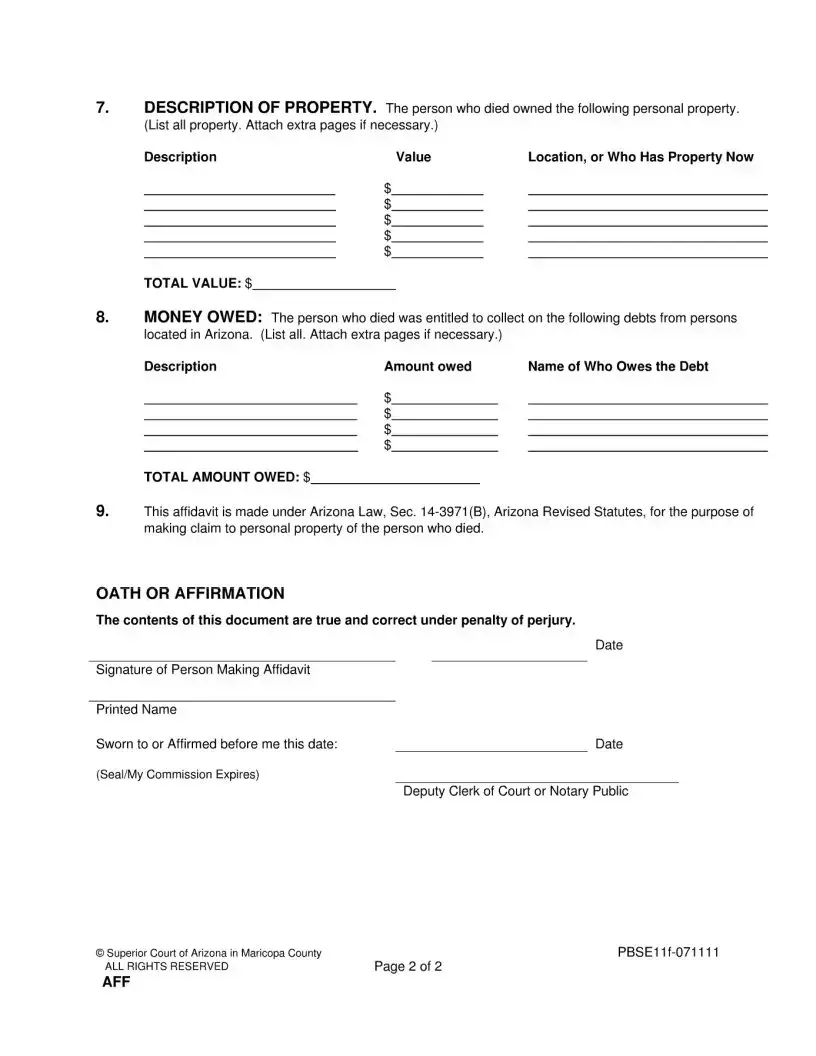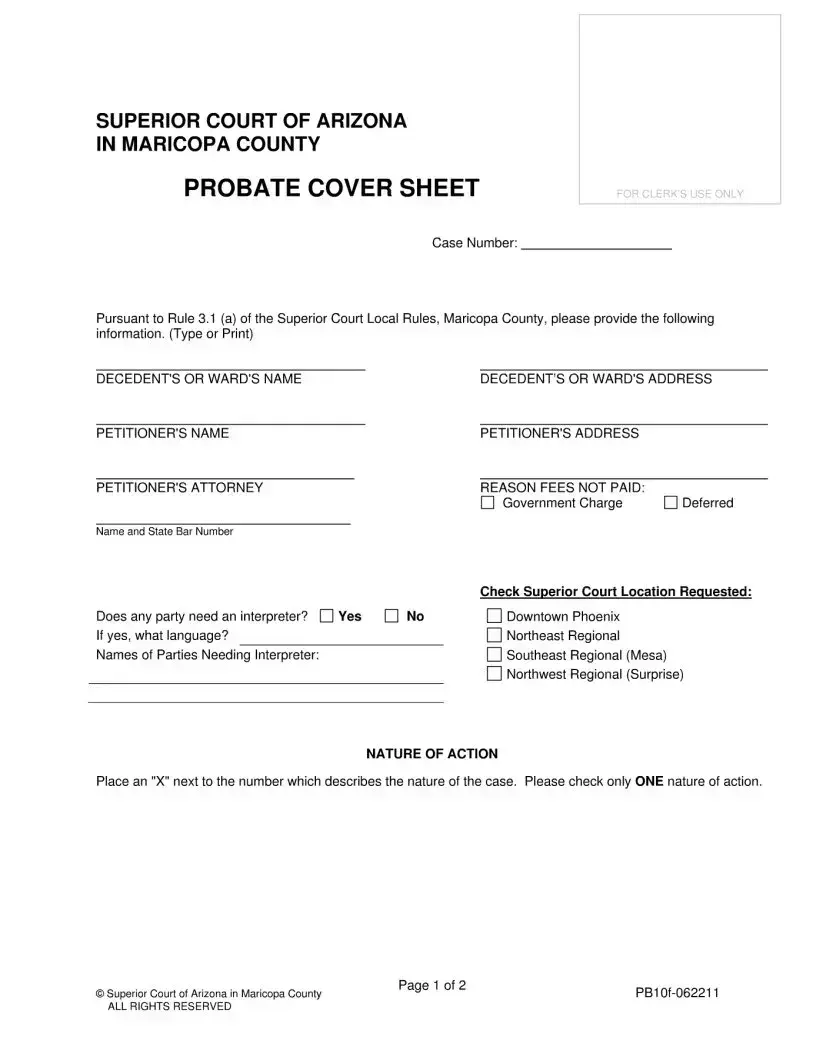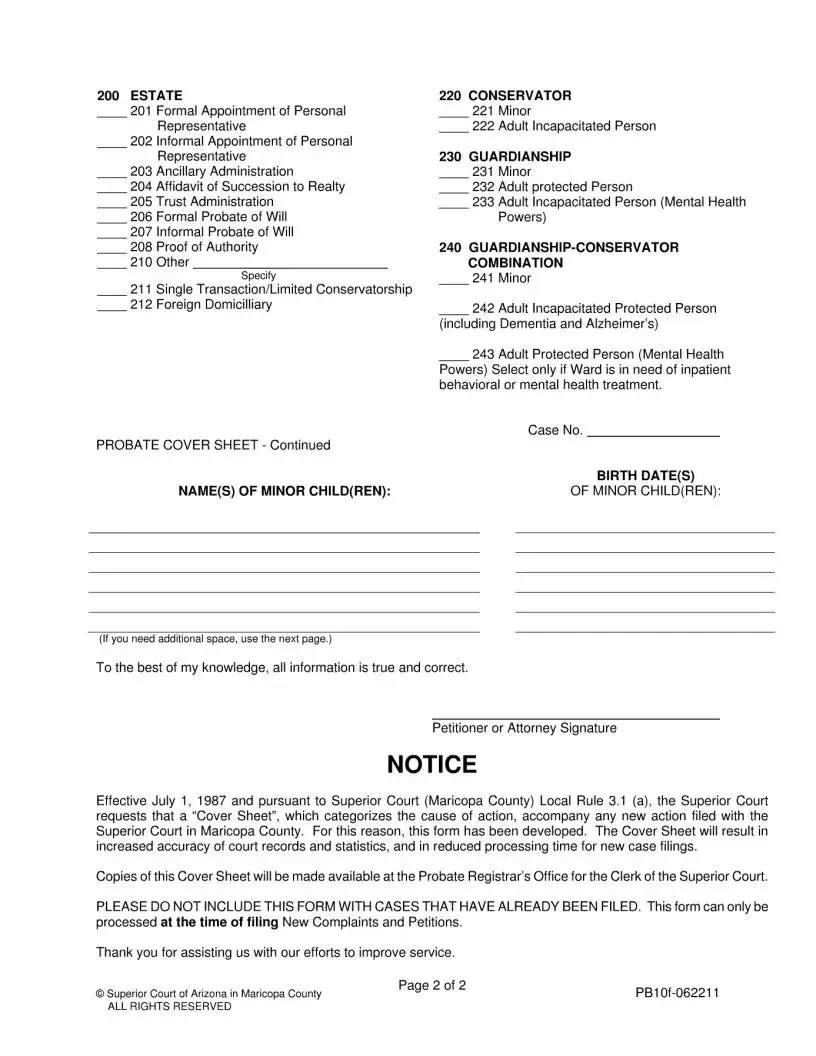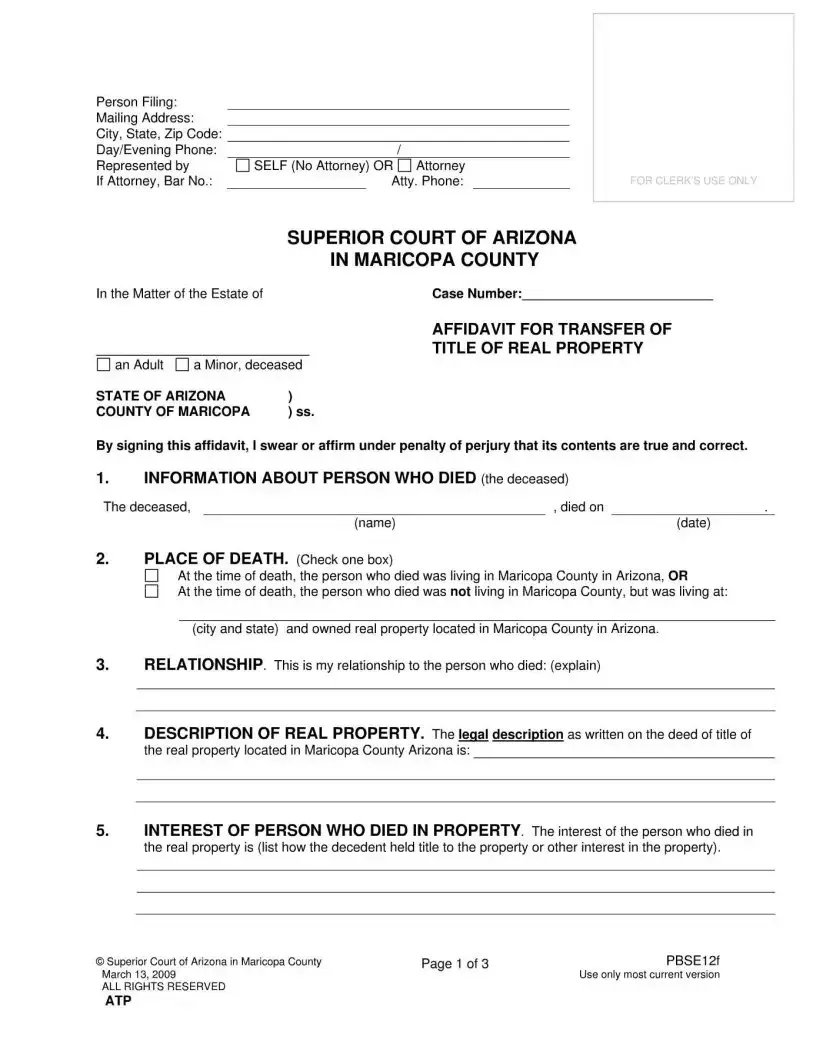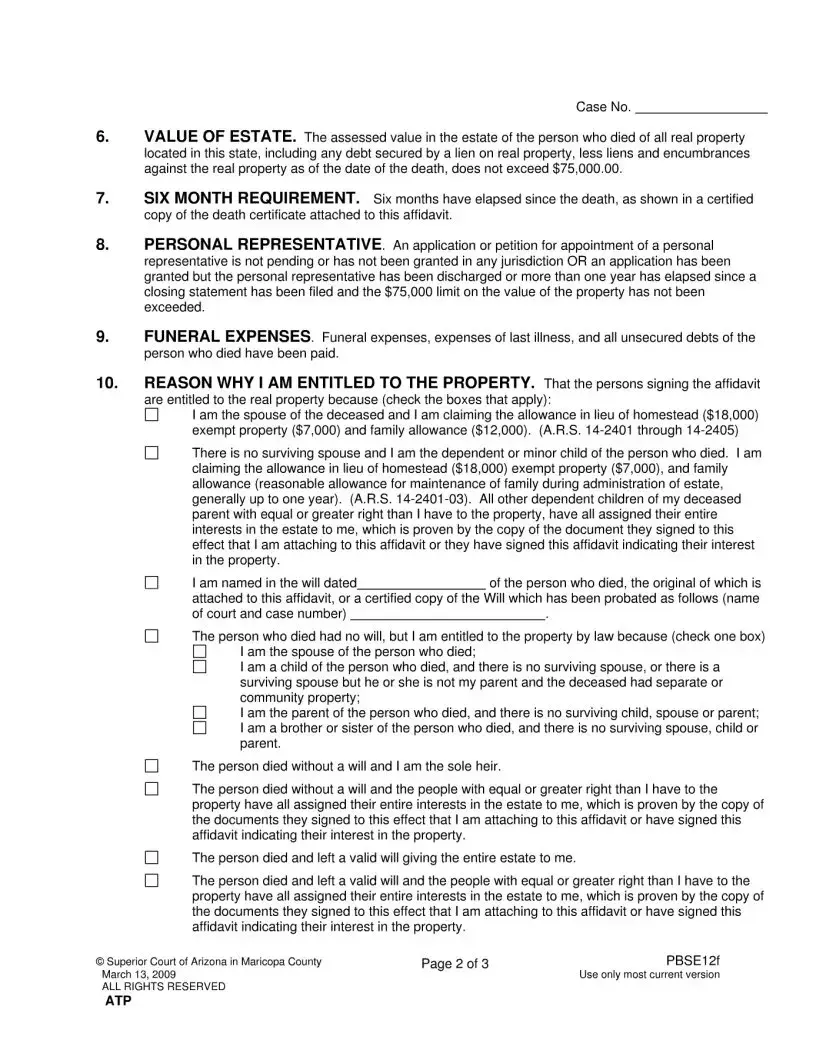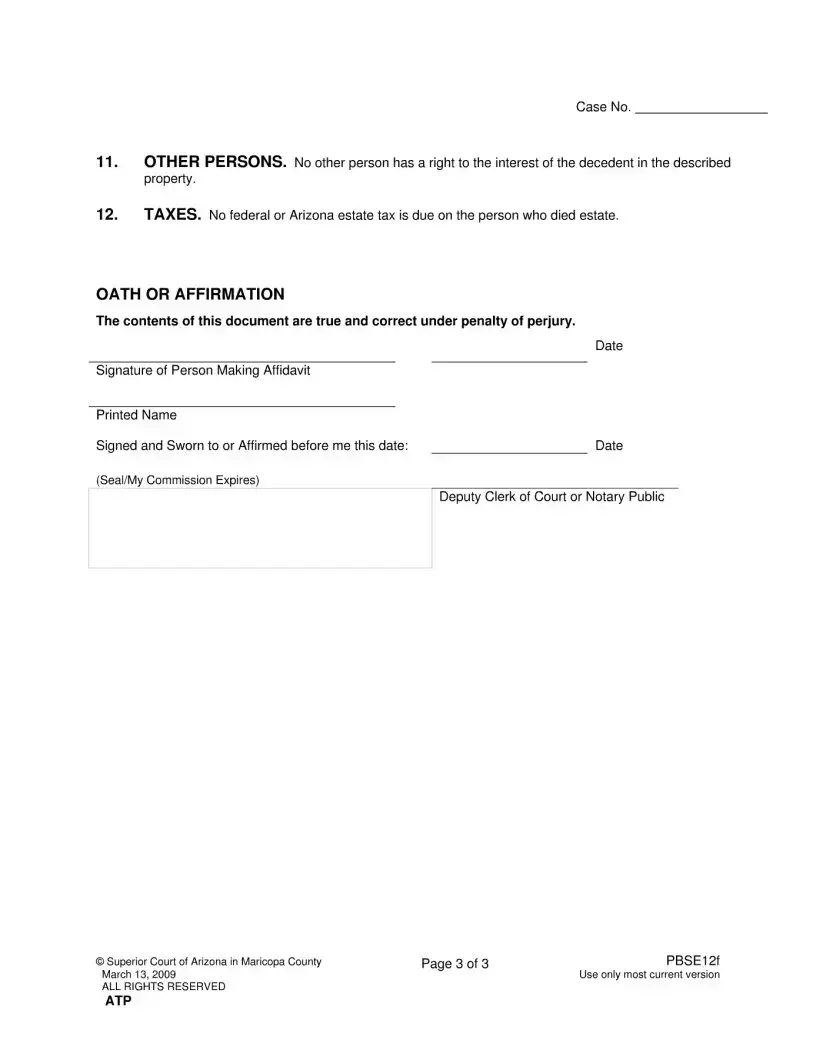What is the Arizona Estate Form?
The Arizona Estate Form is a legal document used by individuals to outline how their assets should be managed and distributed upon their death. This comprehensive document can include specifications regarding personal property, real estate, investments, and instructions for guardianship of minors, among others. It's a crucial step in estate planning to ensure that your wishes are honored and to potentially simplify the legal process for your heirs.
Who needs to fill out an Arizona Estate Form?
Any resident of Arizona who wishes to have control over the distribution of their assets after death should consider filling out an Arizona Estate Form. It is especially important for individuals who have significant property, minor children, or specific wishes about how their estate should be managed. However, it's a practical step for anyone who wants to provide clear instructions and ease the burden on their loved family members during a challenging time.
How can one get started with completing the Arizona Estate Form?
To begin completing the Arizona Estate Form, one should first gather all necessary information about their assets, including details on real estate, personal property, bank accounts, and investments. It's also important to consider who will be named as the executor of the estate, who the beneficiaries will be, and any specific instructions regarding the care of minors or distribution of personal items. Consulting with a legal expert specializing in estate planning is highly recommended to ensure that the form is filled out correctly and all legal requirements are met.
What happens if someone dies without having filled out an Arizona Estate Form?
If a person dies without having filled out an Arizona Estate Form, or any will, their estate will be distributed according to Arizona's intestate succession laws. This means the state dictates how the estate is divided among surviving relatives, which may not align with the deceased's wishes. This can lead to potential conflicts among heirs and a more prolonged, complicated probate process. Therefore, filling out an Arizona Estate Form is a vital step in safeguarding one's wishes and providing for loved ones after death.
